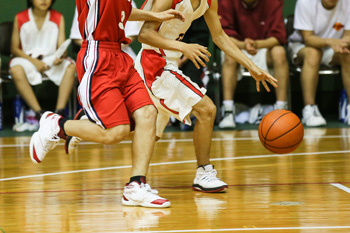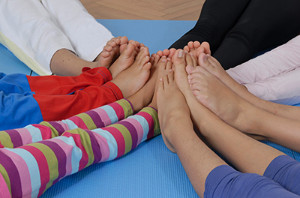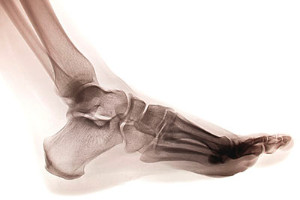Blog
UCF Knights Point Guard Suffers Foot Injury
 University of Central Florida (UCF) Knights point guard B.J. Taylor has suffered a bone fracture in his foot. Coach Dawkins announced that Taylor will miss between four to six weeks. Taylor’s injury is a further strain on the Knights, as two other players also suffered recent injuries. While the injury is unfortunate, it is not a season-ending one; he is expected to return.
University of Central Florida (UCF) Knights point guard B.J. Taylor has suffered a bone fracture in his foot. Coach Dawkins announced that Taylor will miss between four to six weeks. Taylor’s injury is a further strain on the Knights, as two other players also suffered recent injuries. While the injury is unfortunate, it is not a season-ending one; he is expected to return.
Sports related foot and ankle injuries require proper treatment before players can go back to their regular routines. For more information, contact one of our podiatrists of Pennsylvania. Our doctors can provide the care you need to keep you pain-free and on your feet.
Sports Related Foot and Ankle Injuries
Foot and ankle injuries are a common occurrence when it comes to athletes of any sport. While many athletes dismiss the initial aches and pains, the truth is that ignoring potential foot and ankle injuries can lead to serious problems. As athletes continue to place pressure and strain the area further, a mild injury can turn into something as serious as a rupture and may lead to a permanent disability. There are many factors that contribute to sports related foot and ankle injuries, which include failure to warm up properly, not providing support or wearing bad footwear. Common injuries and conditions athletes face, including:
- Plantar Fasciitis
- Plantar Fasciosis
- Achilles Tendinitis
- Achilles Tendon Rupture
- Ankle Sprains
Sports related injuries are commonly treated using the RICE method. This includes rest, applying ice to the injured area, compression and elevating the ankle. More serious sprains and injuries may require surgery, which could include arthroscopic and reconstructive surgery. Rehabilitation and therapy may also be required in order to get any recovering athlete to become fully functional again. Any unusual aches and pains an athlete sustains must be evaluated by a licensed, reputable medical professional.
If you have any questions please feel free to contact one of our offices located in Plymouth Meeting and Ambler, PA . We offer the newest diagnostic and treatment technologies for all your foot and ankle needs.
Many Children Wear Shoes that are the Wrong Size
 Buying the right size shoes for children can be a tough but important task. Unlike adults, children’s feet are still developing and require adequate shoe space so that their feet aren't constricted. A recent survey of 2000 parents found that many children wear shoes that are the wrong size. Shoes that are too small can cause foot conditions like hammertoes and exacerbate bunions. Shoes that are too big can make trips and falls more likely. With this in mind when shopping for shoes, have your children’s feet measured properly by a store clerk or with a foot measuring device. If one foot is slightly larger than the other, go with the larger foot size. Make sure that your children have enough toe space and that the shoe isn’t too tight. Finally, children’s feet are constantly growing, so make sure to measure their feet every time you go shoe shopping.
Buying the right size shoes for children can be a tough but important task. Unlike adults, children’s feet are still developing and require adequate shoe space so that their feet aren't constricted. A recent survey of 2000 parents found that many children wear shoes that are the wrong size. Shoes that are too small can cause foot conditions like hammertoes and exacerbate bunions. Shoes that are too big can make trips and falls more likely. With this in mind when shopping for shoes, have your children’s feet measured properly by a store clerk or with a foot measuring device. If one foot is slightly larger than the other, go with the larger foot size. Make sure that your children have enough toe space and that the shoe isn’t too tight. Finally, children’s feet are constantly growing, so make sure to measure their feet every time you go shoe shopping.
Making sure that your children maintain good foot health is very important as they grow. If you have any questions, contact one of our podiatrists of Pennsylvania. Our doctors can provide the care you need to keep you pain-free and on your feet.
Keeping Children's Feet Healthy
Having healthy feet during childhood can help prevent medical problems later in life, namely in the back and legs. As children grow, their feet require different types of care. Here are some things to consider...
Although babies do not walk yet, it is still very important to take care of their feet.
Avoid putting tight shoes or socks on his or her feet.
Allow the baby to stretch and kick his or her feet to feel comfortable.
As a toddler, kids are now on the move and begin to develop differently. At this age, toddlers are getting a feel for walking, so don’t be alarmed if your toddler is unsteady or ‘walks funny’.
As your child gets older, it is important to teach them how to take care of their feet.
Show them proper hygiene to prevent infections such as fungus.
Be watchful for any pain or injury.
Have all injuries checked by a doctor as soon as possible.
Comfortable, protective shoes should always be worn, especially at play.
If you have any questions please feel free to contact one of our offices located in Plymouth Meeting and Ambler, PA . We offer the newest diagnostic and treatment technologies for all your foot and ankle needs.
Preventing Running Injuries in the Fall
 Autumn is a lovely time of the year but can present some difficulties for runners. While generally not a dangerous time to run, there are some tips one should consider to help prevent running injuries in the fall. Avoid ground that is covered in leaves. This is important, as leaves can be wet and make slips more likely. Furthermore, leaves can also cover up holes in the ground, mud, or other obstacles that can cause you to fall or hurt your foot or ankle. Another tip is to wear brighter or more contrasting colors if you run alongside a road or woodlands. This will keep you visible to drivers. Regardless of whenever or wherever you run, staying alert of your surroundings and following some basic safety tips can monumentally help prevent any running injuries.
Autumn is a lovely time of the year but can present some difficulties for runners. While generally not a dangerous time to run, there are some tips one should consider to help prevent running injuries in the fall. Avoid ground that is covered in leaves. This is important, as leaves can be wet and make slips more likely. Furthermore, leaves can also cover up holes in the ground, mud, or other obstacles that can cause you to fall or hurt your foot or ankle. Another tip is to wear brighter or more contrasting colors if you run alongside a road or woodlands. This will keep you visible to drivers. Regardless of whenever or wherever you run, staying alert of your surroundings and following some basic safety tips can monumentally help prevent any running injuries.
Exercising your feet regularly with the proper foot wear is a great way to prevent injuries. If you have any concerns about your feet, contact one of our podiatrists of Pennsylvania. Our doctors will treat your foot and ankle needs.
How to Prevent Running Injuries
Many common running injuries are caused by overuse and overtraining. When the back of the kneecap starts wearing out and starts causing pain in your knee, this is commonly referred to as runner’s knee. Runner’s knee is a decrease in strength in your quadriceps and can occur if you’re not wearing properly fitted or supporting shoes. To prevent runner’s knee, focusing on hip strengthening is a good idea, as well as strengthening your quads to keep the kneecaps aligned.
What Are Some Causes of Running Injuries?
- One cause of a common running injury is called iliotibial band syndrome.
- Plantar fasciitis is also another common injury.
- Stress fractures can occur from overtraining, lack of calcium, or even your running style.
Best Ways to Prevent Running Injuries
- Wear footwear that fits properly and suits your running needs.
- Running shoes are the only protective gear that runners have to safeguard them from injury.
- Make a training schedule. Adding strengthening exercises as well as regular stretching can help keep you strong and limber and can lessen the possibility of injuries.
- Stretching keeps muscles limber; this will help you gain better flexibility.
If you have any questions please feel free to contact one of our offices located in Plymouth Meeting and Ambler, PA . We offer the newest diagnostic and treatment technologies for all your foot and ankle needs.
Explanation of a Stress Fracture
 Stress fractures are typically what is known as an “overuse injury”. It commonly happens in response to a heavy workload placed on the bone. Over time, a buildup of calcium occurs around the bone when it’s overused. If the bone is not able to repair itself while not undergoing stress, tiny cracks may form, resulting in what is know as a stress fracture. It typically occurs in the foot, leg and pelvis. Some symptoms can include pain and swelling. Because it’s more common for women to develop osteoporosis, they’re much more likely to obtain a stress fracture. When the lower part of the body is overused, the bones of the feet are at great risk for stress fractures.
Stress fractures are typically what is known as an “overuse injury”. It commonly happens in response to a heavy workload placed on the bone. Over time, a buildup of calcium occurs around the bone when it’s overused. If the bone is not able to repair itself while not undergoing stress, tiny cracks may form, resulting in what is know as a stress fracture. It typically occurs in the foot, leg and pelvis. Some symptoms can include pain and swelling. Because it’s more common for women to develop osteoporosis, they’re much more likely to obtain a stress fracture. When the lower part of the body is overused, the bones of the feet are at great risk for stress fractures.
Activities where too much pressure is put on the feet can cause stress fractures. To learn more, contact one of our podiatrists from Pennsylvania. Our doctors can provide the care you need to keep your pain free and on your feet.
Dealing with Stress Fractures of the Foot and Ankle
Stress fractures occur in the foot and ankle when muscles in these areas weaken from too much or too little use. The feet and ankles then lose support when walking or running from the impact of the ground. Since there is no protection, the bones receive the full impact of each step. Stress on the feet can cause cracks to form in the bones, thus creating stress fractures.
What Are Stress Fractures?
Stress fractures occur frequently in individuals whose daily activities cause great impact on the feet and ankles. Stress factors are most common among:
- Runners
- People affected with Osteoporosis
- Tennis or basketball players
- Gymnasts
- High impact workouts
Symptoms
Pain from the fractures occur in the area of the fractures and can be constant or intermittent. It will often cause sharp or dull pain with swelling and tenderness. Engaging in any kind of activity which involves high impact will aggravate pain.
If you have any questions please feel free to contact one of our offices located in Plymouth Meeting and Ambler, PA . We offer the newest diagnostic and treatment technologies for all your foot and ankle needs.
